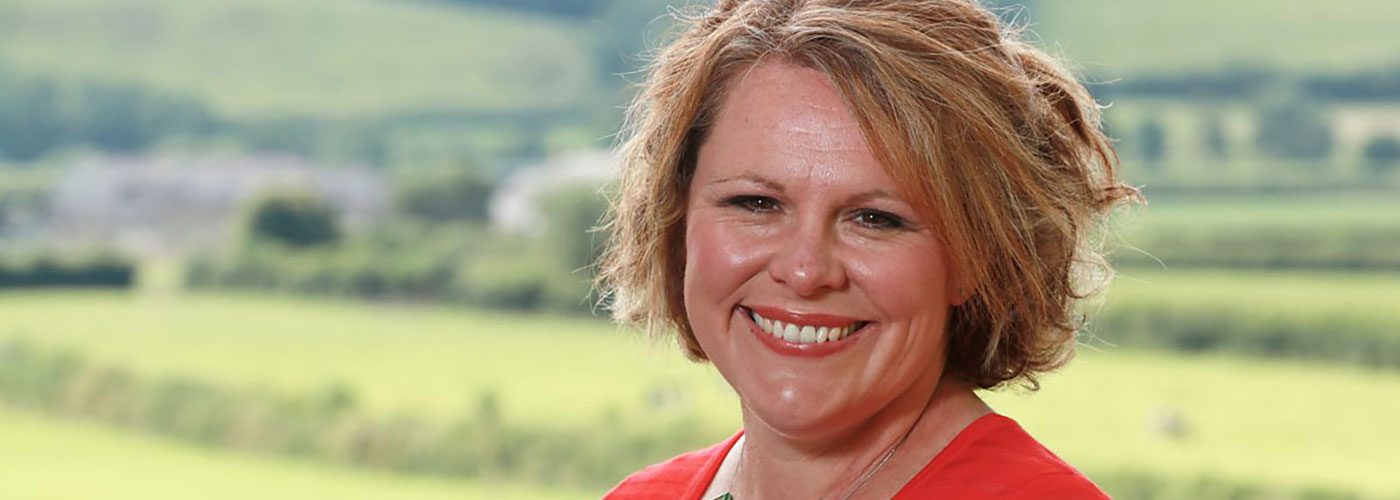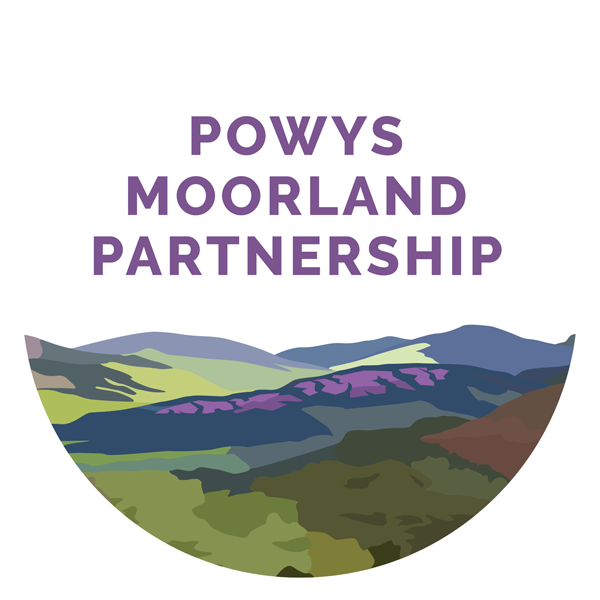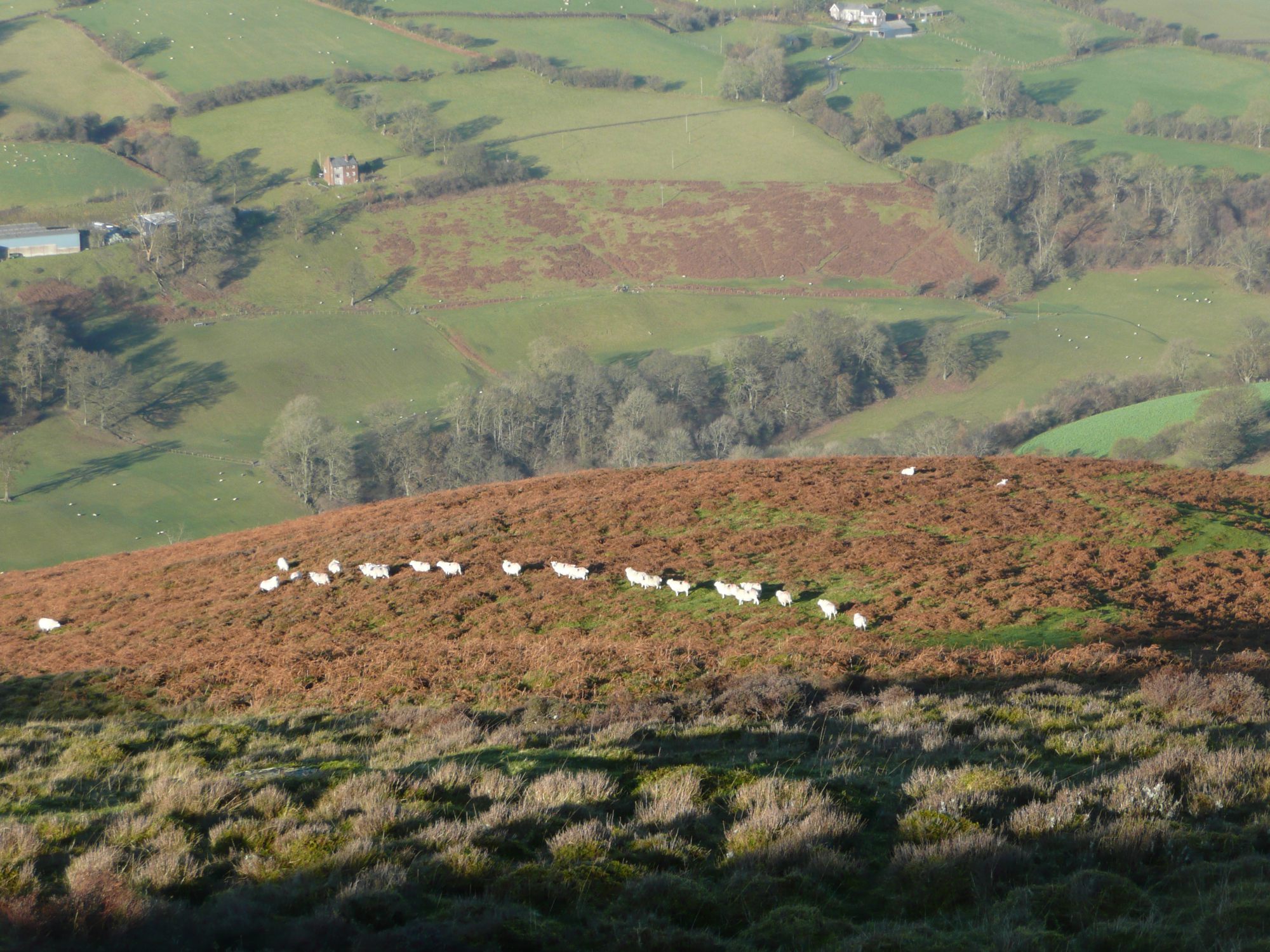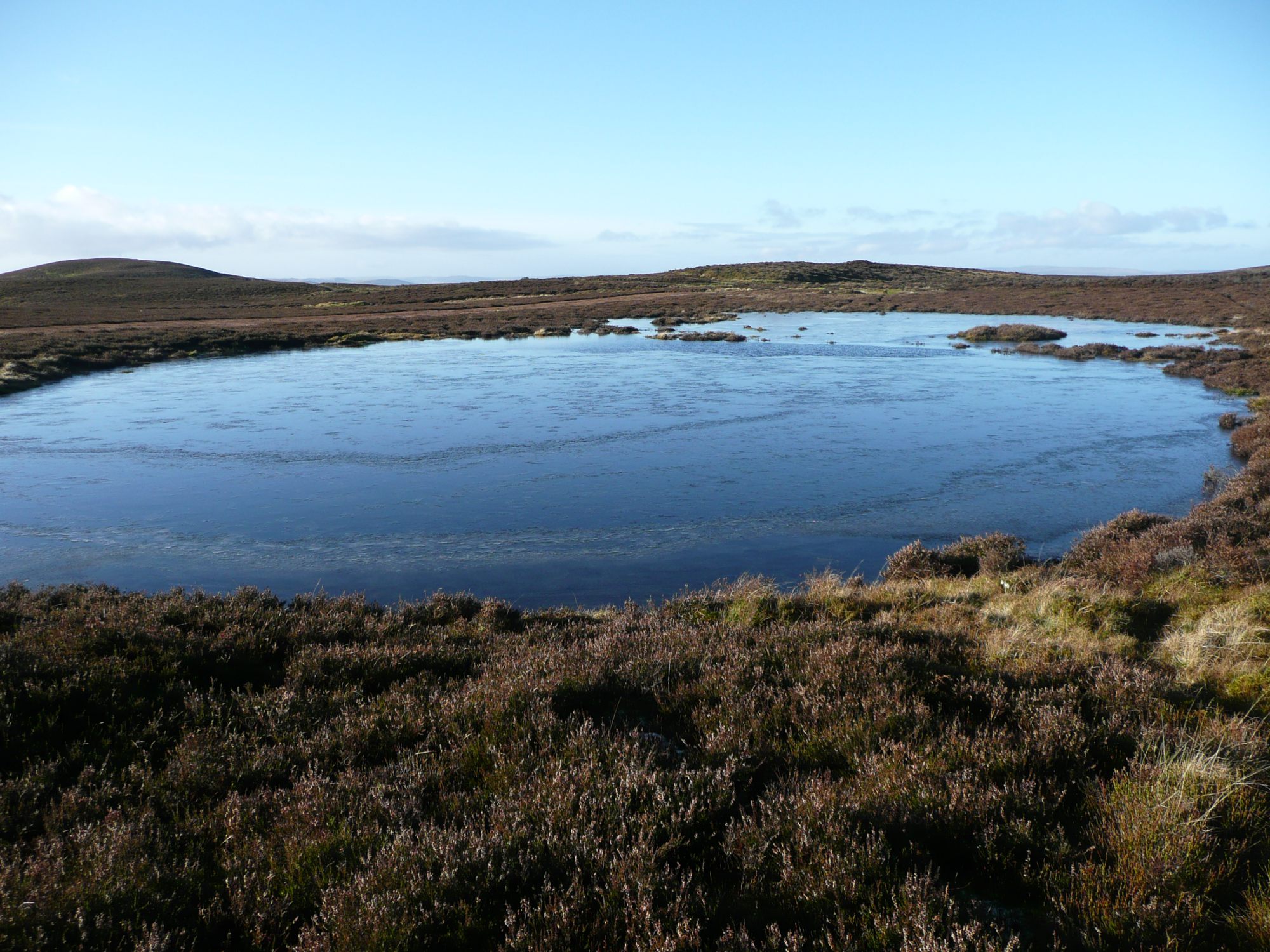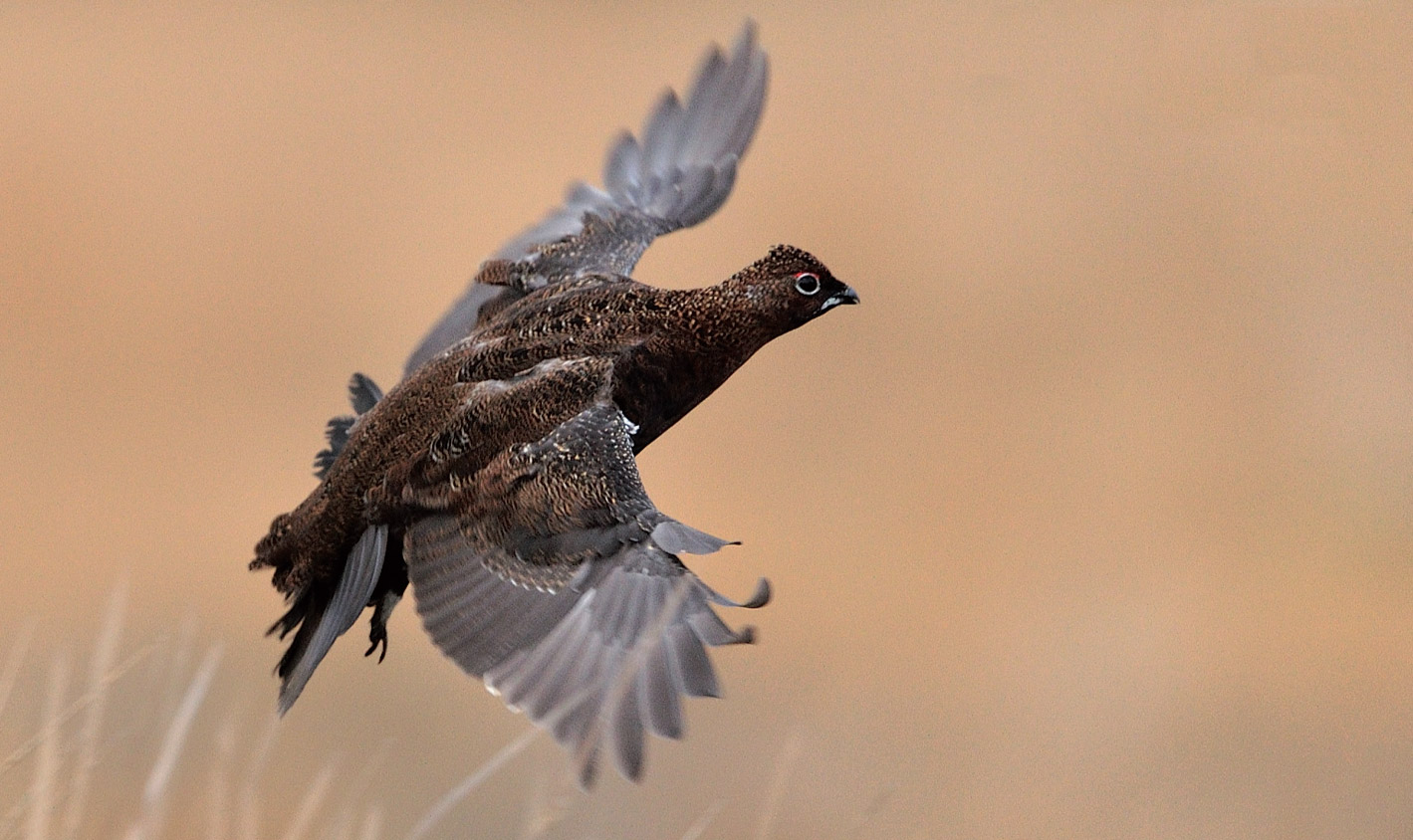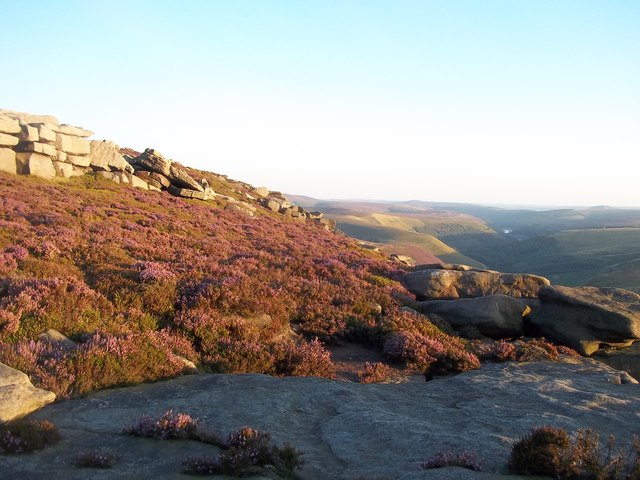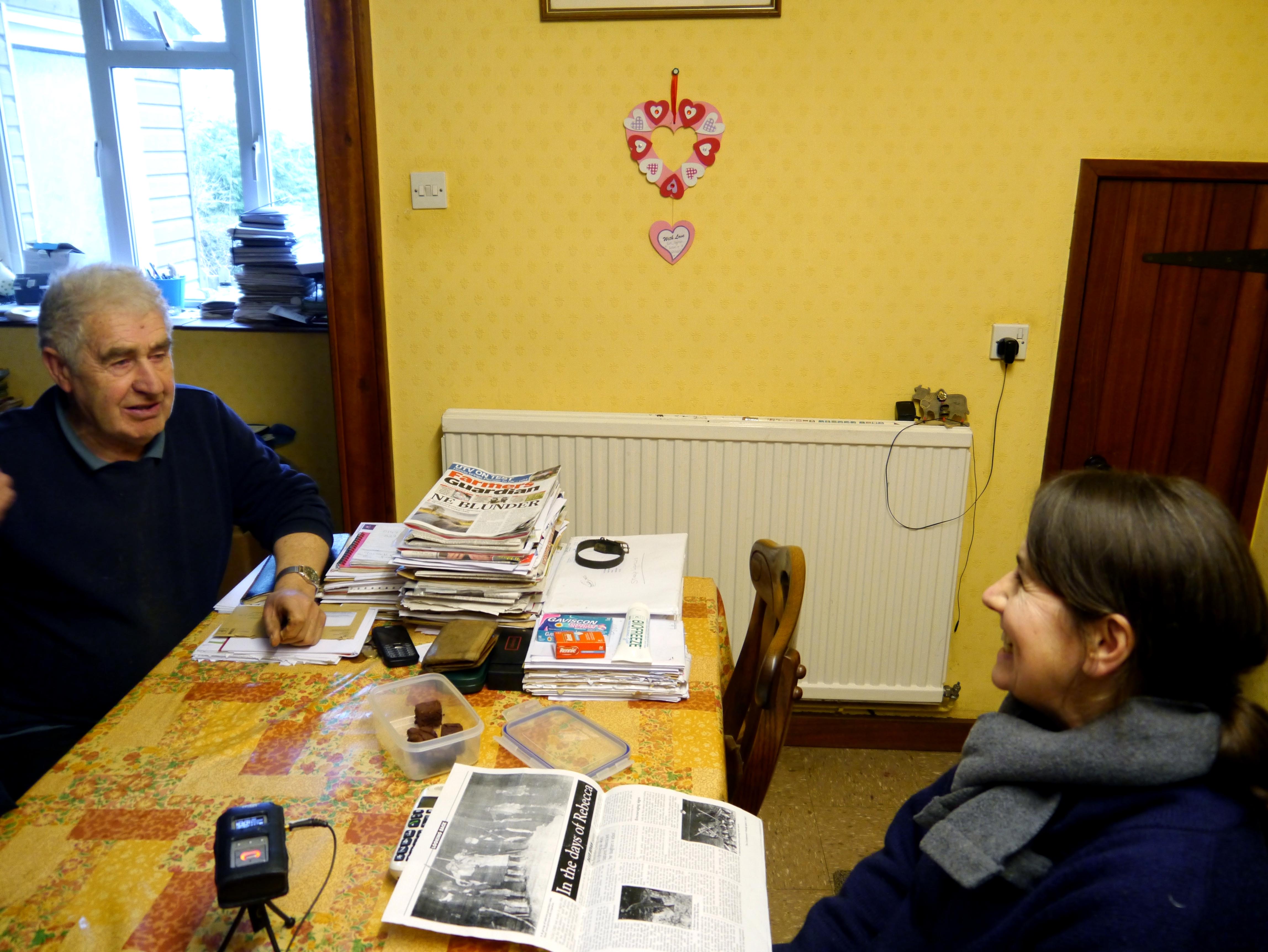The Powys Moorland Partnership was the subject of an episode of Country Focus with Rachel Garside on BBC Wales last Sunday morning. Country Focus is a programme on BBC Wales serving everyone living in the countryside and tackling issues affecting them. In this episode Rachel Garside visited the moors with Catherine Hughes and Nick Myhill to understand the aims of the PMP.
You can listen back to the programme below.
Big Farmland Bird Counts – creating year-round habitats
PMP has carried out a number of counts on various farms joining the moorland this January/February where Hay and Clyro primary children helped gather the data.
PMP project facilitator Catherine Hughes comments: “Although we keep hearing about the decline of so many bird species it’s exciting for kids to see that once you start looking closely and being still for 30 minutes with binoculars to hand you start seeing more than you think.
These events, sponsored by the NFU this year, raises the awareness of the efforts farmers put in to helping wildlife and what simple practices can be put in place to help recover nesting areas.”
Matt Goodall is the Game & Wildlife Conservation Trust advisor. He stressed the need to help the birds throughout the bare months known as the hunger gap – January/February, March by planting mixed variety – preferable using kale and quinoa – cover crops in appropriate areas of the fields to give cover and food to the birds and insects to feed the chicks. Ideally we want year round habitats to help all our birds get the best start.
Results will be issued on our website.
What does a sustainably managed moor look like?
That’s a question which The Powys Moorland Partnership hopes to provide some answers to.
There is of course no one model of sustainable land use, things will look different in different places. However three moors in mid-Wales provide the setting for a three year Welsh Government and EU funded project exploring how to achieve a workable and long-term balance between nature and people, including those who earn a living from the moors and those who enjoy them for recreation. It is the classic sustainable development mix of environment, economy and society.
The initiative includes Ireland Moor, Beacon Hill and Bal Bach, and its primary focus is on the aim of reversing the decline of our iconic moorland bird species such as the red grouse, curlew, lapwing, and golden plover by restoring their heather moorland habitats and employing keepers. The purpose of the Sustainable Management Scheme is to support collaborative landscape scale projects taking action to improve the resilience of our natural resources and ecosystems in a way that also delivers benefits to farm businesses and rural communities.
Collaboration is identified as the key to success and much of the effort in the project is on bringing the various interests together to discuss and agree the best way forward, so that everyone gets what they need from the moors. This is done through a series of public events and surveys, to gather the knowledge and opinions of those who use, own, farm, manage and visit the three moors.
When it comes to restoring the biodiversity on these moors, a huge amount of monthly data is being recorded to help the landowners to quickly spot the key areas in which to focus their attention. Judging by the numbers of foxes and corvids being removed, predator control is clearly a key priority. However, maintaining the heather with the invasion from gorse and bracken is also a big challenge. Following advice from Dick Bartlett of British Moorlands, the project has begun to focus upon customised heather cutting and burning techniques which are designed to offset the impact of high raptor densities.
Catherine Hughes is the Project Manager and much of her time is taken up speaking with the various interests from owners, keepers and graziers to recreational and tourism interests. Catherine says “By engaging with all interested parties we can start to agree on the 80% of what we want our landscapes to look like in the future, but it takes time and commitment to get the messages across. This collaboration is a new initiative therefore we have to keep involving all interested parties and keep up the momentum and strengthen the story as we proceed and more importantly demonstrate what the outcomes are through restoration of the ground. Engagement and more engagement and constant communication is key. School visits are hugely positive especially when the kids are so enthusiastic and feel able to ask any question they like particularly as it is their community. By having gamekeepers and graziers conduct the visits our aim is to find solutions where our landscapes have a bigger and better story to tell. The children clearly enjoy having gamekeepers and graziers explain what and why they do what they do. It really can’t be taught in the classroom. It also potentially inspires them to think of what they could get involved with in the countryside as a career.”
Our aim is to get 500 local children up on the moors over the three years and develop new ways through a variety of citizen science, arts, music etc to convey the beauty of our landscape and get them to help us celebrate their importance. We need the children to feel an ownership of them and so far it has been fantastic and the message from these kinds of events get quickly communicated to a much wider audience. The moorland story is complex with so many different aspirations but we are engaging with as many stakeholders as possible to see if ultimately we can boost the biodiversity and create quality jobs to bolster the rural economy and in the process build resilience into our Welsh moorlands.”
Additionally, the Project is collating data from the moors themselves. A baseline natural capital evaluation has been carried out by eftec. Some simple citizen science is also underway, with quadrats having been marked out so that measurements of percentage cover of plant species can be assessed, and vegetation height can be measured twice a year. In addition, some fixed-point photography has also been undertaken. All of these methods will enable progress to be measured in due course.
The owner of Ireland Moor, Will Duff-Gordon, is particularly interested in restoring some grouse shooting to the moors in Powys. Will has witnessed the steady decline in the health of these moors during his lifetime and he decided to kick start a much needed turnaround. In order to do this, it made sense to secure government support then begin an ambitious project that will stimulate investment in 20,000 acres of Powys moorland.
“Through multiple meetings and conversations we hope to create a better awareness of the public benefits that are performed by these moorland habitats. The end goal is that the land can continue to be enjoyed by many but within the boundaries of what is good for the land and its rare species. The public, farmers and landowners need to help the land become resilient to ever greater public use and provide ongoing funding for full time moorland keepers. We believe it’s possible to achieve this and with an excellent team of keepers, advisors, farmers and local facilitators we are well positioned. The Welsh Government have been excellent collaborators so far and we feel a great sense of duty to repay their faith and prove that employing moorland keepers should be the key driver to preserve and enhance the stunning mid Welsh moors”.
The Heather Trust is very pleased to be involved with the Partnership. We are providing the training element of the project, and we are also providing some administrative support to Catherine Hughes to help her pull the various threads together.
So far we have provided events on Integrated Management and Bracken Control, enabled a keeper exchange between Powys and Aberdeenshire, and we were able to organise an advisory visit from Dick Bartlett of British Moorlands Ltd.
We also have a best practice burning event planned for the Autumn and more to come next year. Our events have both a theory and a practical element to them and have been very well attended, with lots of good discussion, sharing of ideas and positive feedback.
For the bracken management day, we were able to draw on the expertise of Heather Trust President, Rob Marrs Agronomist Jonathan Harrington and Welsh Water, as well as pull in a range of companies providing bracken management equipment for practical demonstrations on Beacon Hill.
David Thomas manages Beacon Hill which is owned by the Crown Estates. Beacon Hill was once a very important Grouse moor in the nineteenth century attracting a lot of people from all over the UK and beyond. You can see the remains of the Victorian Shooting lodge on the hillside today and there was even a railway station to bring guests right up to the moor by train. David has been working on restoring the heather since 2014 and liaising closely with the graziers on the common so that a balance between heather, grazing and bracken can be achieved. David is already seeing the fruits of his work with more red grouse appearing along with other waders but the challenge of predators is very apparent. “Finding the balance will need more resources,” says David, “and more collaboration by all interested parties. With our permitted burning period being two weeks shorter in Wales compared to England and Scotland, we have a number of things against us so closer collaboration with WG and NRW is crucial.”
Our autumn event will be on Llantony Moor which is owned by Arwyn Davies and seven other partners – all from the medical profession. Bought almost 20 years ago Arwyn and his team’s interest in being part of the Partnership stems from their love of this moor with its abundance of heather not forgetting the spectacular views across the Brecon Beacons and beyond.
“As we have grown older the management of Bal Bach has meant older heather is evident which has impacted on the bird life.We want to keep the energy going and are proud to be part of the PMP which is helping us manage the moor with rotational cuts and burns along with keeping predators in check. We love our days on the moor in August/September.
It is a social event where we shoot a few grouse and enjoy a hearty picnic.”
The three years of the pilot is not long in terms of moorland management. To see these moors truly offer a sustainable mix of outputs will no doubt take longer, but it is an important start that is enabling real and important progress to be made. As the UK moves towards a future for land management that is no longer supported by the Common Agricultural Policy, the Partnership is testing out the natural capital balance that is prevalent in government thinking at the moment. Their efforts now should stand them in good stead for the rural policy that replaces the existing farm support and rural development system.
Return of the Welsh grouse
David Thomas is working on an exciting project to restore wildlife to the hills of Powys
Moorland Management
Location: Beacon Hill, Powys
Acreage: 5,000
Percentage in conservation: 100
Funding grants: Sustainable Management Scheme, supported by the Rural Development Programme
Conservation measures: Predator control, brashing, wiping, cool burning, pond digging, and bird surveys.
David Thomas
David Thomas is a gamekeeper on Beacon Hill moor, 5,000 acres of the Crown Estate near Pilleth in Powys, the site of Owain Glyndwr’s famous defeat of the English at the battle of Bryn Glas. The land is grazed by sheep farmers who hold commons’ rights and the shooting rights are rented by a small local syndicate captained by Peter Hood, a retired hill farmer. David’s post is funded by the Welsh Government (WG) as part of the Powys Moorland Partnership which includes three separate moors aiming to restore grouse and other endangered moorland birds.
The project started after the 2013 State of Nature report revealed continued declines of wildlife in Wales. Frustrated that despite a considerable investment in conservation work there was very little success to show, the WG announced a new pilot program called the Nature Fund to deliver environmental, economic and social outcomes through collaborative action within two years. Out of that came the Sustainable Management Scheme (SMS) now funded by the Rural Development Programme. GWCT’s
Teresa Dent and Ian Coghill helped to put together a partnership of land managers and applied successfully to the SMS for funding for the Powys Moorland Partnership and the North Wales Moorland Partnership.
David is in the first year of the current three-year funding programme but has been working full time on the hill for three years. After the initial Nature Fund grant finished in 2015, rather than let the work go to waste, he decided to work for nothing and spent his own money on equipment while waiting for the SMS money to come through.
In the nineteenth century Beacon Hill was a prodigious grouse moor. You can see the remains of a grand Victorian shooting lodge on the hillside and there was even
a railway station to bring guests right up to the moor by train. These days the grouse are clinging on at about 30 brace in the autumn counts and the waders and other moorland species have been similarly reduced. The reasons are complex. Since the 1960s as the great estates disappeared, many of the Welsh uplands were ploughed or planted with woods and the remaining heather moors became isolated.
“Sheep grazing plays a crucial role in keeping down scrub and trees and the farmers on the hill are keen to make the project a success.”
In the 1970s headage payments were introduced under the CAP, which meant farmers received subsides according to the number of sheep on their land. As a result, heather, bracken and grass were over grazed, leaving little, food, nesting habitat or shelter for waders and other birds. Since headage was replaced by area payments after the Foot and Mouth crisis the transformation has been dramatic, with heather and bracken returning to the hillside. David feels the grazing level is about right, except during winter months when ideally the number of sheep would be reduced. Sheep grazing plays a crucial role in keeping down scrub and trees and the farmers on the hill are supportive and keen to make the project a success. It helps that David and Peter were both sheep farmers and they believe most are conservationists at heart. Peter said: They have a soft spot for the hills and the wildlife and they are also tickled pink by the crow control David has achieved.
Overgrazing may have been an issue in the past, but for David the current principal challenge is predation. As with elsewhere in the UK, generalist predator numbers have been increasing steadily. The prime threat to grouse and waders is the fox. The problem lies in the fact that there is no other keepering for grouse or pheasant shoots within 15 miles, so any vacuum created on the hill is quickly filled. Covering 5,000 acres on his own is a big challenge for David. Use of GWCT approved humane snares is essential and they are deployed in a highly targeted manner. A night vision rifle scope is also invaluable as foxes can be alarmed by the infrared lamp. If he
is after a particular fox. David regularly stays up several nights in succession until the small hours of the morning and is still not guaranteed success.
I’m currently putting in an 80-hour week. If it’s dry and there’s a full moon I lamp four or five hours every night. This winter I’ve accounted for 85 foxes up here and each year I get more because I’m getting better at it, but it’s still the tip of the iceberg. Another keeper described the hill as the perfect place for predators as it’s an island moor.
In addition to foxes, avian predators, in particular carrion crows, take the eggs and chicks of ground-nesting birds in the breeding season. David controls them by means of Larsen and ladder traps and has caught about 2,700 in the past three years. His trapping line, which includes tunnel traps for stoats, weasels and rats takes five hours to check every morning. Crow numbers may also have been boosted by less lambing on the hill. Peter explained: Farmers used to control crows because they would kill the newborn lambs. These days you see many who will walk under a crow’s nest without noticing.
Grouse can be found on areas of the moor where they hadn’t been when David started and on one part of the moor numbers have trebled according to this year’s spring counts, but they are starting from a low base and the challenge is great. Other birds species are making a more rapid recovery including mistle thrushes and skylarks and cuckoos can now be heard in profusion in spring. These like to lay their eggs in meadow pipit’s nests, which have also increased. Hare numbers have boomed and so too have kestrels and merlins. This year, more extensive bird counts will be carried out for the first time so progress can be mapped more accurately. Another endangered species to have benefitted, which is close to David’s heart is the curlew. He said: We have managed to increase curlew broods on the hill, which I am delighted by. When you hear the bird’s call on the moor at the end of February, it’s the first sign of spring and I stop to admire the sound spilling from the sky, equalled only by the skylark.
“Everyone involved knows we need to share this special place with everybody.”
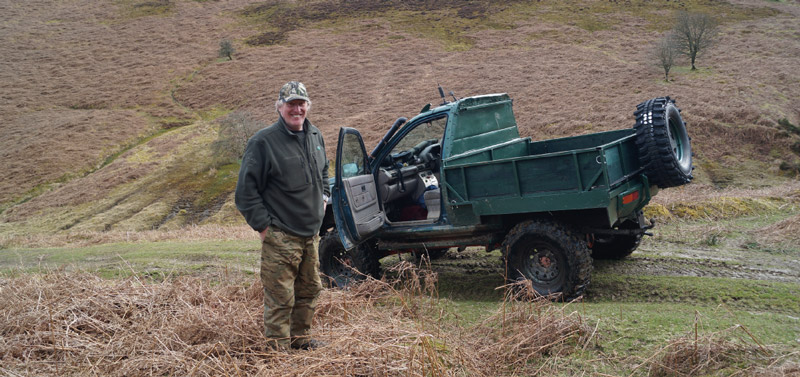
Impressive results on Beacon Hill and other moors in the partnership have fed into the Shropshire & Welsh Marches Recovery Project, a grassroots curlew conservation campaign run by Amanda Perkins. Notes based on GWCT science are now being used as guides by the local community groups involved in the project.
Another large part of David’s work is restoring a balance of habitat by creating a patchwork of heather, bracken, white grass and moss as well as digging ponds to provide water for grouse and to attract insects. In the past, the heather was either overgrazed or allowed to grow too tall and large areas have been overtaken by bracken, which is controlled by wiping the plants with herbicide rather than spraying to avoid damage to the grass and moss beneath. Younger heather can be brashed (cut) and the older, leggier areas show far better restoration through burning. David has initiated a ten-year rotation of small areas of cool burn to avoid damaging the moss and peat underneath. One of the biggest challenges is the tiny window. He explained, Our permitted burning period is two weeks shorter than in England and Scotland. You need three clear sunny days and no snow to burn and because there is so much rainfall it is difficult to keep within the timeframe.
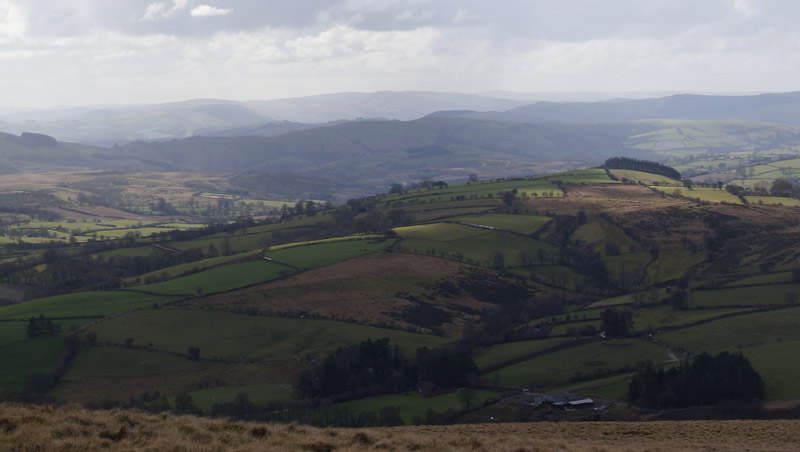
Wildlife Highlights
Red listed
- Cuckoo (left)
- Winchat
- Curlew (inset)
- Mistle thrush
- Ring ousel
- Skylark
- Hen harrier
Amber listed
- Grouse
- Kestrel
- Meadow Pipet
- Merlin Hobby
- Brown hare
Members of the shoot volunteer their time to lend a hand with brashing and burning. They release a few redleg partridges every year for two informal shoot days. Peter, whose family has held the shooting rights since 1950 explained: Our way of shooting is very unusual it’s similar to a family picnic. Wives and children come out on ponies and we drive the ground, it’s more like a grouse count. The butts have long since disappeared, so I place the Guns. In the 1960s the syndicate had eight days with an average bag of 15 brace on each, this year they limited the whole season’s bag to three grouse. The aim is eventually to fund David’s work through one or two let days per year. There is still a way to go, but the syndicate is fully supportive of the broader conservation project and happy to keep going until grouse numbers return.
From the WG’s point of view one of the positives of the SMS approach is the potential through keepering to provide employment in remote upland areas. Another is the opportunity to engage the community and get more members of the public out onto the hill and enjoying the wildlife. David is confident this can be achieved provided existing laws, which require people to stick to footpaths and keep dogs on leads around livestock, are enforced. He said: Everyone involved knows we need to share this special place with everybody. They manage to do it on the grouse moors in the north of England so we can here.
Looking ahead, David is hoping to have an assistant keeper from October until the spring. Current funding is due to end in 2020 and he is hoping that should grouse numbers not yet be sufficient to pay for the management, the wider conservation successes such as greater numbers of curlew and other waders will persuade the Welsh Rural Development Programme to continue supporting the project. He said: I want to see viable Grouse shooting back in Wales with all the benefits to the other ground nesting birds that brings. As the WG has backed the project with considerable investment, I want it to repay their trust and to show that shooting can fund great conservation work.
GWCT Research in Practice
Sustainable Management Scheme
Sue Evans, GWCT Wales director
Following a pilot study in 2013, GWCT, CLA Cymru and FWAG Cymru gathered a number of grouse moor managers together to see if there was an appetite among them to reinstate active moorland management. After a successful joint bid for funding from the Welsh Rural Development Programme under the Sustainable Management Scheme (SMS) the group established the 16,000-acre North Wales Moorland partnership and the 20,000-acre Powys Moorland Partnership in Mid Wales with Cath Hughes acting as facilitator and continued guidance from GWCT.
The demise of wildlife in Wales highlighted by the 2013 State of Nature Report meant that a different approach was crucial in order to save the birds on the endangered list. The SMS focuses on tangible results or outcomes, gives greater flexibility to the farmers/landowners about how these can be achieved and works on a landscape scale through cooperative partnerships. This collaborative approach engages a much greater number of people from across the rural community and beyond, linking the preservation of natural resources to the nation’s health in line with the Well-being of Future Generations (Wales) Act 2015.
This article was written by Joe Dimblebey for the Game and Wildlife Conservation Trust.
Geoff Eyre – Moorland regeneration pioneer
The Fieldsports magazine website recently ran a great insight into the work of a true moorland pioneer: Geoff Eyre.
Since taking on the sporting lease for Howden Moor in Derbyshire’s Peak District in the 1990s, Geoff has achieved spectacular results as he set about regenerating its habitat by applying careful management practice and innovative agronomist principles.
“An ESA (Environmentally Sensitive Areas) programme outlined the importance of heather cover in supporting a diverse number of species. Whilst some attempt was made to reverse heather loss, I asked if I could try a different approach.”
Geoff pioneered an ingenious use of smoke along with careful seed improvement, controlled burning, cutting and spraying. Consequently, thousands of acres of moorland have recovered, and his methods are now followed on moors across the north of England and Scotland.
This in turn has resulted in increased employment opportunities for keepers to look after the increasing acreages of productive heather areas.
There is a thriving birdlife at Howden, including a third of the Peak District’s ring ouzels. Big numbers of golden plover, curlew, lapwings and an increasing number of black game. In fact all typical moorland birds. And Geoff has given talks to birdwatching clubs. There is an increasing number of peregrines and merlins, and a high density of goshawks, and relative newcomers buzzards and ravens! “I had never seen a raven until 10 years ago – now we seem to have lots of them.”
And furthermore, thousands of walkers now have better-than-ever views of swathes of purple heather!
Scientific appraisal
You can read a detailed scientific appraisal of the management of Howden Moor, including a downloadable PDF, on the Science Direct website.
Graham Williams – Activity holiday pioneer
Graham Williams, an innovator of activity holidays in the 1960s and 70s, talks to Catherine Hughes about what drew him to setting up in Powys, and why the area is the centre of the “spiders’ web”.
Interviewer – Catherine Hughes
Music Soundtrack & Introduction – Jeremy Creighton Herbert
Sound Recordist – Jeremy Creighton Herbert
Walter Price – Memories of farm life, sheep, curlews, canny cows… and pubs
Walter Price was bought up on a small holding on Ireland Moor. Walter’s father Ben was head head gamekeeper on Ireland for many years. Recorded in conversation with Catherine Hughes, 2017, when Walter was 94 years old.
Interviewer – Catherine Hughes
Music Soundtrack & Introduction – Jeremy Creighton Herbert
Sound Recordist – Jeremy Creighton Herbert
Billy Bridgewater – Farmer and grazier (pt.1)
Billy Bridgewater is a farmer and grazier. He owns three farms, now run by his sons. For a time he bred ponies on the hills, for pit ponies. He is passionate about the grouse. First part of an interview with Catherine Hughes.
Farmer – Billy Bridgewater
Interviewer – Catherine Hughes
Music Soundtrack & Introduction – Jeremy Creighton Herbert
Sound Recordist – Jeremy Creighton Herbert
Billy Bridgewater – Farmer and grazier (pt.2)
Billy Bridgewater is a farmer and grazier. He owns three farms, now run by his sons. For a time he bred ponies on the hills, for pit ponies. He is passionate about the grouse. Second part of an interview with Catherine Hughes.
Farmer – Billy Bridgewater
Interviewer – Catherine Hughes
Music Soundtrack & Introduction – Jeremy Creighton Herbert
Sound Recordist – Jeremy Creighton Herbert
Keep in touch, get involved.
We will be putting on various events over the next 12 months. If you would like to get involved, have some ideas please contact Catherine on urmyc.sdnalroomsywop@tcatnoc
